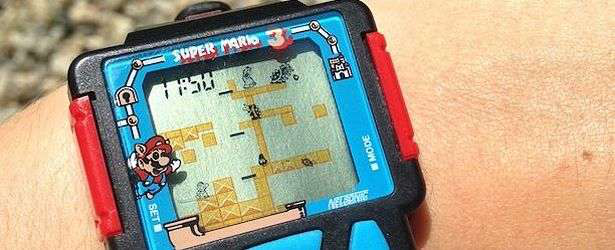Better With Kinect
by Tim
 Removing DRM restrictions. Scrapping 24 hour online authentication. The ID@Xbox program. Both the Microsoft corporation and the Xbox One console they unveiled back in May 2013 are almost a world apart from what they are today. Policies have been reversed, key figures have stepped down (good riddance, Mr Mattrick), and, after a mighty E3 showing, it seems games are well and truly back at the forefront of the big M’s strategy for worldwide living-room domination. It’s not quite as clear-cut as saying the PlayStation 4 is outpacing the Xbox One when you factor in the number of territories both new machines launched in, but nor is it unfounded to say Team Sony possess the upper hand in the latest battle of the console war either, rallying more support from the wider gaming community when its closest rival lost focus on their core audience. To their credit though, Microsoft and recently promoted to Head-of-all-things-Xbox Phil Spencer have listened, learned, and acted accordingly, even if it did mean taking a bullet or several, the biggest of which took the form of a certain motion controlled peripheral device. Hmm…
Removing DRM restrictions. Scrapping 24 hour online authentication. The ID@Xbox program. Both the Microsoft corporation and the Xbox One console they unveiled back in May 2013 are almost a world apart from what they are today. Policies have been reversed, key figures have stepped down (good riddance, Mr Mattrick), and, after a mighty E3 showing, it seems games are well and truly back at the forefront of the big M’s strategy for worldwide living-room domination. It’s not quite as clear-cut as saying the PlayStation 4 is outpacing the Xbox One when you factor in the number of territories both new machines launched in, but nor is it unfounded to say Team Sony possess the upper hand in the latest battle of the console war either, rallying more support from the wider gaming community when its closest rival lost focus on their core audience. To their credit though, Microsoft and recently promoted to Head-of-all-things-Xbox Phil Spencer have listened, learned, and acted accordingly, even if it did mean taking a bullet or several, the biggest of which took the form of a certain motion controlled peripheral device. Hmm…
After much hoo-ha surrounding the mandatory inclusion of Kinect 2.0 with every Xbox One, Microsoft finally caved in and announced that a vanilla version of the console would be released without the camera, thus reducing the price to £349/$399, putting it on par with the PS4’s more appealing price tag. Spencer said the reasoning behind this change of heart “was really about giving gamers more choice”, and it’s a move that has certainly renewed interest in the console amongst those who dismissed Microsoft’s insistence that Kinect is “an absolutely integral part of the experience” as arrogant, with the Kinect-free console ‘flying off the shelves’ according to GameStop’s vice president of merchandising, Bob Puzon, and Microsoft reporting console sales in June had doubled those of May. Plus, as an added bonus, it also frees up the estimated ten percent of GPU memory reserved for Kinect functionality, meaning games that aren’t using the device could gain a little more graphical grunt. Bungie’s Destiny, for example, is now able to achieve 1080p on Xbox One.
So it would seem, then, that the decision to drop Kinect as standard has already started to pay off. But are these short-term benefits enough to make a difference in the long-term, and is the removal of Kinect the right call after Microsoft swore to the internet they never would?
Cutting out Kinect doesn’t necessarily give the Xbox One an edge over the competition, but rather takes it away. Even with the GPU boost, the PS4 remains the (marginally) more powerful console, meaning for the same price as a Kinect-free Xbox One you could instead buy a PS4 which boasts more power and takes up less room under your TV. And it looks sleeker. Of course there’s more to consider when purchasing an expensive new machine, but in terms of specs the Xbox One without Kinect still comes off as a slightly inferior PS4. The point being if Xbox One still isn’t a better proposition than PS4 without Kinect, then it might as well try to be better with Kinect. Kinect’s removal really only means the loss of the unique selling point, and despite all the flak the camera receives (and no doubt so will I now), that’s a bad thing.
 Finding a way to reduce the price and become more competitive was blatantly the main reasoning here. Kinect’s upping of entry point fee for Xbox One certainly played a role in holding the console back, but it’s also what differentiates it from the competition, and, crucially, the only thing it does better. So rather than drop Kinect from the package, what Microsoft should have done was push the device more and justify its inclusion in the first place. Since they were so adamant Kinect would always come bundled with the console, they needed to convince us why we should consider paying extra.
Finding a way to reduce the price and become more competitive was blatantly the main reasoning here. Kinect’s upping of entry point fee for Xbox One certainly played a role in holding the console back, but it’s also what differentiates it from the competition, and, crucially, the only thing it does better. So rather than drop Kinect from the package, what Microsoft should have done was push the device more and justify its inclusion in the first place. Since they were so adamant Kinect would always come bundled with the console, they needed to convince us why we should consider paying extra.
Unfortunately, the dire disappointment of the Xbox 360 incarnation of Kinect understandably led to caution and cynicism towards its successor. The general perception has been Kinect 2.0 doesn’t work either, and it’s a perception Microsoft have failed to debunk. Sure enough, there’s an element of truth there – it may not be one hundred percent accurate all the time – but for the most part the sensor responds very well. The critical sticking point has been the lack of notable games to showcase Kinect 2.0’s capabilities to its fullest. Kinect Sports: Rivals has been the flagship game for a reason, but unfortunately it wasn’t ready in time to ship as a launch game (if it was it might have sold a few more copies), and until its arrival six months later early adopters had to make do with the slim pickings of Just Dance 2014, Zumba Fitness World Party, and the universally panned Fighter Within as the only Kinect exclusives, none of which scream killer app.
So if the games weren’t there from the outset, then Microsoft should have laid out their Kinect roadmap instead. What other games are coming for the device? How will they improve the tech through system updates? Will virtual/augmented reality fit into the fray? Ignoring the Twitch and Skype side of things, as it stands currently Kinect has little going for it beyond a few indie titles (It Draws A Red Box, FRU), some voice commands in a selection of triple-A games, and Harmonix’s upcoming duo of Fantasia: Music Evolved and Dance Central: Spotlight. On the bright side, if anyone’s going to prove Kinect’s worth, it’s going to be Harmonix. It was their work on the Dance Central series that provided the best reason to buy the original Kinect for Xbox 360 after all, eclipsing even Rare’s efforts with Kinect Sports.
A bigger obstacle still is the stigma that Kinect isn’t for core gamers, which is almost like saying automatic car drivers aren’t worthy to hold a driving license. Of course you’re opinion towards Kinect can be informed by your playing habits, but regardless as to whether you label yourself hardcore or casual (ooh er missus), it shouldn’t dictate whether Kinect is or isn’t for you. I’m a core gamer, and guess what? I like Kinect. Shock horror! Admittedly, I forever have and forever will prefer playing games with a physical controller, but sometimes it’s good (not to mention healthy) to get off the sofa and move around a little bit. Maybe I’m yet to be totally convinced by Kinect, or even motion control at large, but I’ve always believed in its potential. Just like Michael Bay films, there’s definitely a place for it in my life.
 So yeah, I’ll jump up and down, flail my arms around and make a prat of myself in front of a camera sometimes, and yes, I am disappointed Microsoft have chosen to abandon their motion control venture so soon. Naturally they claim they’re still committed to Kinect, and ultimately reckon they’ll shift more units once there’s a larger install base of Xbox Ones. “I believe you’ve got to sell the console before you can sell Kinect” Spencer told Polygon. There is logic in his seeming madness, but realistically Kinect’s virtually dead in the water. It’s catch-22: nobody’s going to fund or develop a Kinect-only game when the install base isn’t lucrative enough, and no punter’s going to buy Kinect when there are no games for it.
So yeah, I’ll jump up and down, flail my arms around and make a prat of myself in front of a camera sometimes, and yes, I am disappointed Microsoft have chosen to abandon their motion control venture so soon. Naturally they claim they’re still committed to Kinect, and ultimately reckon they’ll shift more units once there’s a larger install base of Xbox Ones. “I believe you’ve got to sell the console before you can sell Kinect” Spencer told Polygon. There is logic in his seeming madness, but realistically Kinect’s virtually dead in the water. It’s catch-22: nobody’s going to fund or develop a Kinect-only game when the install base isn’t lucrative enough, and no punter’s going to buy Kinect when there are no games for it.
Conversely, the five million or so confirmed Kinects already out in the wild means Microsoft, if no one else, have some form of obligation to the early adopters who paid extra for their Xbox One with the sensor whether they wanted it or not. And with that obligation, I reckon, comes an opportunity. An opportunity for salvation perhaps, to turn things around like they have done with almost everything else related the Xbox One since its shambolic reveal. Providing Microsoft play their cards right and that they seriously support and invest in the device, there’s a slight chance Kinect could make a revitalising comeback. So what will it take to do so?
Kinect can’t survive on a regime of games consisting of silly dance routines and patronising fitness gurus aimed at deluded mums this time. It needs more; it deserves better. It needs games built from the ground up with Kinect, and therefore its limitations, specifically in mind, which immediately relegates certain genres almost non-applicable – it’s telling Ryse dropped Kinect exclusivity in favour of a traditional control scheme. It’s highly unlikely you’ll be playing Halo 6 entirely with Kinect in 2018 then, but the oft rumoured Halo Wars sequel could be a different matter.
Real Time Strategy is a genre very few have conquered on console. It’s a genre that demands a mouse and keyboard over analogue sticks and impulse triggers. But with added gesture control and voice commands, a console RTS could become a more viable option; rather than fumble with a controller, simply point your fingers and bark your orders, y’know, like a real commander. And what brand could sell Kinect to the Xbox masses better than Halo? Halo Wars 2 would benefit from Kinect integration, and Kinect would sell more with Halo backing it up. It’s win-win.
Point-and-clicks, pseudo or otherwise, is another genre also ripe for Kinect compatibility, especially now it can track your individual digits. Imagine scouring a Fabletown crime scene, waving your hand across the screen and plucking an imaginary object from thin air only to see Bigby Wolf pick up the desired object on-screen. Quantic Dream’s style of games would be a natural fit too. Fahrenheit, Heavy Rain, and Beyond: Two Souls are non-traditional games with equally non-traditional control set-ups, so surely controlling the action via gestures rather than convoluted sequential button presses is a logical alternative. If Microsoft can lure David Cage out of Sony’s bed, and if David Cage can improve his script writing, Kinect may finally get a game worth shouting about. Until then, Swery 65’s reliably oddball-looking D4: Dark Dreams Don’t Die is the closest we’re likely going to get.
 Kinect can also be called upon for optional extras in more traditional controller-based games too don’t forget, at the expense of that minuscule GPU boost of course. In the Xbox 360’s case, most games resorted to voice control, such as Mass Effect 3’s squad commands, Splinter Cell: Blacklist‘s enemy distractions, and Skyrim’s dragon shouts (FUS RO DAH). But voice commands are old hat these days, and there’s more to Kinect than an in-built microphone. Now, with more advanced tech under the hood, Kinect could be used for more creative and practical applications that stretch beyond talking aloud.
Kinect can also be called upon for optional extras in more traditional controller-based games too don’t forget, at the expense of that minuscule GPU boost of course. In the Xbox 360’s case, most games resorted to voice control, such as Mass Effect 3’s squad commands, Splinter Cell: Blacklist‘s enemy distractions, and Skyrim’s dragon shouts (FUS RO DAH). But voice commands are old hat these days, and there’s more to Kinect than an in-built microphone. Now, with more advanced tech under the hood, Kinect could be used for more creative and practical applications that stretch beyond talking aloud.
For instance, did you know Kinect can monitor your heart rate? Obviously a handy feature for fitness games, but what about a procedurally generated horror game (preferably one that’s better than Daylight)? Kinect can decipher when you’re getting too comfy for your own good, and the game can decide which door the axe-wielding loony can burst out from. Staying with horror, how about actually holding your own breath rather than keeping a button compressed so as to not alert the alien to your whereabouts when hiding in Alien: Isolation? Judging from previews, you’ll likely be doing this subconsciously anyway, so why not add it to the final game? The potential for some brain-bending fourth wall breakage boggles the mind too. What could renowned fourth wall vandals Hideo Kojima or Rocksteady cook up when let loose?
And finally, how many of you spend hours painstakingly attempting to recreate yourselves in a character creation screen? What if you could stand in front of Kinect, give it a twirl, and BAM! An eerily accurate, or hideously wrong (or maybe both), digital version of yourself is staring right back at you. Kinect Sports: Rivals scans your face into the game, and there’s a good chance the tech will be shared amongst other first party titles (Crackdown would be a good shout), so theoretically games like Fallout 4, The Elder Scrolls VI, and Saints Row 5/V (delete as applicable, Volition) could do it as well.
If developers put their minds to it, there could be hundreds more ways Kinect can augment their games, although actual free-running in Assassin’s Creed and Mirror’s Edge might be a little too impractical. The problem with optional Kinect extras like these though is that they’re just that, optional, and can rarely ever be more than gimmicks since the game has to work just as well with or without them. Innovative as some of them they may be, they’re more back-of-the-box features than game enhancing improvements, and they don’t turn Kinect from an inessential to an integral piece of gaming kit. And there lays the problem.
What Kinect desperately needs more than anything else is a hardware-defining game that can only be possible with Kinect, something it’s never quite had the luxury of obtaining. Dance Central and Rez spiritual successor Child Of Eden came closest on Xbox 360, but the former’s “party game” status meant it never quite cut it as a system-seller amongst the upper echelons, whilst the latter’s on-rails psychedelic shooting was best enjoyed played with a pad. Rare has thus far acted as Microsoft’s dedicated Kinect studio, having done some impressive work with the tech on all three Kinect Sports games, but a developer who tends to think outside the box when it comes to game design, such as Quantic Dream or thatgamecompany, whose works are feasibly suited to motion control, is where Kinect’s definitive game is more likely to come from.
 Microsoft may have been wrong to make Kinect mandatory at launch, but I’d argue they are just as wrong to make it optional six months later. If Kinect was ever going to be a choice then it needed to be a choice from the beginning, not after five million loyal customers have parted with an extra £80/$100 on the grounds it would always be part of the package. I’d also argue it was Microsoft’s lack of support for Kinect rather than the fact it came bundled which was the problem. Microsoft’s spectacularly muddled messaging failed to convey any of Kinect’s merits as a gaming platform, and I ponder if they’d commissioned more exclusives and clearly demonstrated its improved prowess, gamers might have gotten on-board with it.
Microsoft may have been wrong to make Kinect mandatory at launch, but I’d argue they are just as wrong to make it optional six months later. If Kinect was ever going to be a choice then it needed to be a choice from the beginning, not after five million loyal customers have parted with an extra £80/$100 on the grounds it would always be part of the package. I’d also argue it was Microsoft’s lack of support for Kinect rather than the fact it came bundled which was the problem. Microsoft’s spectacularly muddled messaging failed to convey any of Kinect’s merits as a gaming platform, and I ponder if they’d commissioned more exclusives and clearly demonstrated its improved prowess, gamers might have gotten on-board with it.
Yes, I concur, Kinect 2.0 still veers a little on the temperamental side (space and latency issues are still present if not deal-breakers), and I understand the criticisms of bundling the unit with the Xbox One console. But at the same time, I also see the positives. With parity between the number of Kinects and the number of Xbox Ones there’s more financial viability for developers to make more, better games for it, and in a time when audiences are craving more creativity, Kinect could have been the key to unlocking it, maybe going so far as to aid the discovery of new genres. And as the years roll on, Kinect can only get smaller, and the tech inside better: Kinect 3.0 or even 4.0 could definitely become something special. But for that to happen, Microsoft needs to act now and think up a new strategy for Kinect, because if it doesn’t get its chance in the spotlight then it won’t get its watershed moment. And that, I genuinely think, would be a shame.
Last five articles by Tim
- Future Perfect
- A Thief's Alternative End
- Uncharted 4: A Thief’s End - Review
- Ratchet & Clank - Review
- Gears Of War 4 – Multiplayer Beta Impressions























This is a tough one for me. As far as I’m concerned, it wasn’t necessarily the must-have nature of Kinect that turned me 100% off the Xbox One so I don’t have as much hate for the unit itself as I do for the people behind it. My love for the Xbox died when Microsoft turned their back on the very people who put them at the top of the console food chain, so I have all but ignored the Xbox One since its announcement and will likely never buy one.
On the other hand, I do see what you’re saying. They sold the Xbox One on the condition that Kinect would always be there and, ridiculously, would be an integral part of the way the whole system operated… and then (typically) pulled a complete 180 on that whole idea. So those people who were early adopters, or just staunch supporters, are now left with an £80 peripheral that serves no purpose because the devs aren’t getting behind it.
It happened with the HD-DVD player, of which we have two, although that clearly wasn’t anything to do with Microsoft dropping the ball… so a much less bitter pill to swallow for those who supported the format. It’s a shame that there are around five million people with a near-useless Kinect and I personally feel that if Microsoft can’t encourage developers to fully utilise it (as an OPTION for those who want it) then they should offer a rebate in exchange for being duped into buying a useless peripheral that they were told was mandatory.
Seriously enjoyed this article, even as a strong disliker of the Xbox One.
Lot of lies and misinformation in this post
1) MS has yet to cross 5 million in sales as confirmed by Phil Harrison. Are you accusing Phil Harrison of lying and that they have SOLD 5 million to consumers (Sony even mocked them in their Gamescom con)
2) Harmonix aren’t happy about Kinect’s removal. You really think they’ll be putting their effort to save it? They begged people online to help them kickstart their next PS4 game, Amplitutde Tell me that won’t create bad blood
3) Even in the month when Xbone’s sales DOUBLED, it got outsold by PS4 in it’s strongest market by almost 100k unit.
4) The month you mentioned where it was flying off was June. Strange how you never mentioned July’s NPD where sales returned to a sluggish level (140k~)
5) Finally, the market’s that MS has released in generally sucked for the console. Japan? 1.2 million 360s last gen. They wanted the main markets USA, UK and Germany, all losing in them…they want as far as to say they WILL get 40% of Germany’s market. Right now, not a single XBO game is in Germany’s top 50 charts. Not one. They’ll be lucky to hold unto 5%
That’s it. Keep on soldiering…and remember to paste #XB1M13 to get your $3 from Microsoft.
Only recently did I buy an Xbox One and part of the reason I waited was Kinect, I didn’t want it. Like many many others, I onwed a Nintendo Wii but it didn’t get played as much as I thought it would. The nature of motion controls was an interesting idea and fun to start with but I didn’t want to be standing or flailing around to play a game. It’s the reason I never contemplated buying Kinect for the Xbox 360, motion gaming wasn’t for me, unless it’s standing with a plastic guitar it seems. I did try Kinect once for an achievement needed in Forza 4 but it was not a pleasant experience.
Making the Kinect a mandatory extra at launch was just one of many mistakes Microsoft made in preparation for the launch of their new console. Their arrogance of ‘we know what gamers want’ attitude didn’t quite have gamers praising them like they thought and therefore changes came about.
Kinect is now being sold as a separate device and to try to help appease the problems that caused with Harmonix they are including their game as part of the bundle. Damage control, with gamers and with developers but isn’t that the Microsoft way; remember the red ring of death fiasco. Not long after the program to repair the RROD was in place Peter Moore left Microsoft; all the announcements and turnarounds for Xbox One and Don Mattrick left Microsoft; be careful how you tread Phil Spencer.
$3! I wish.